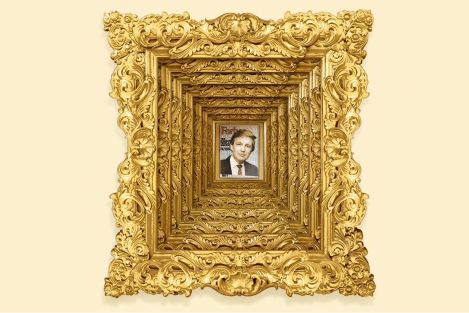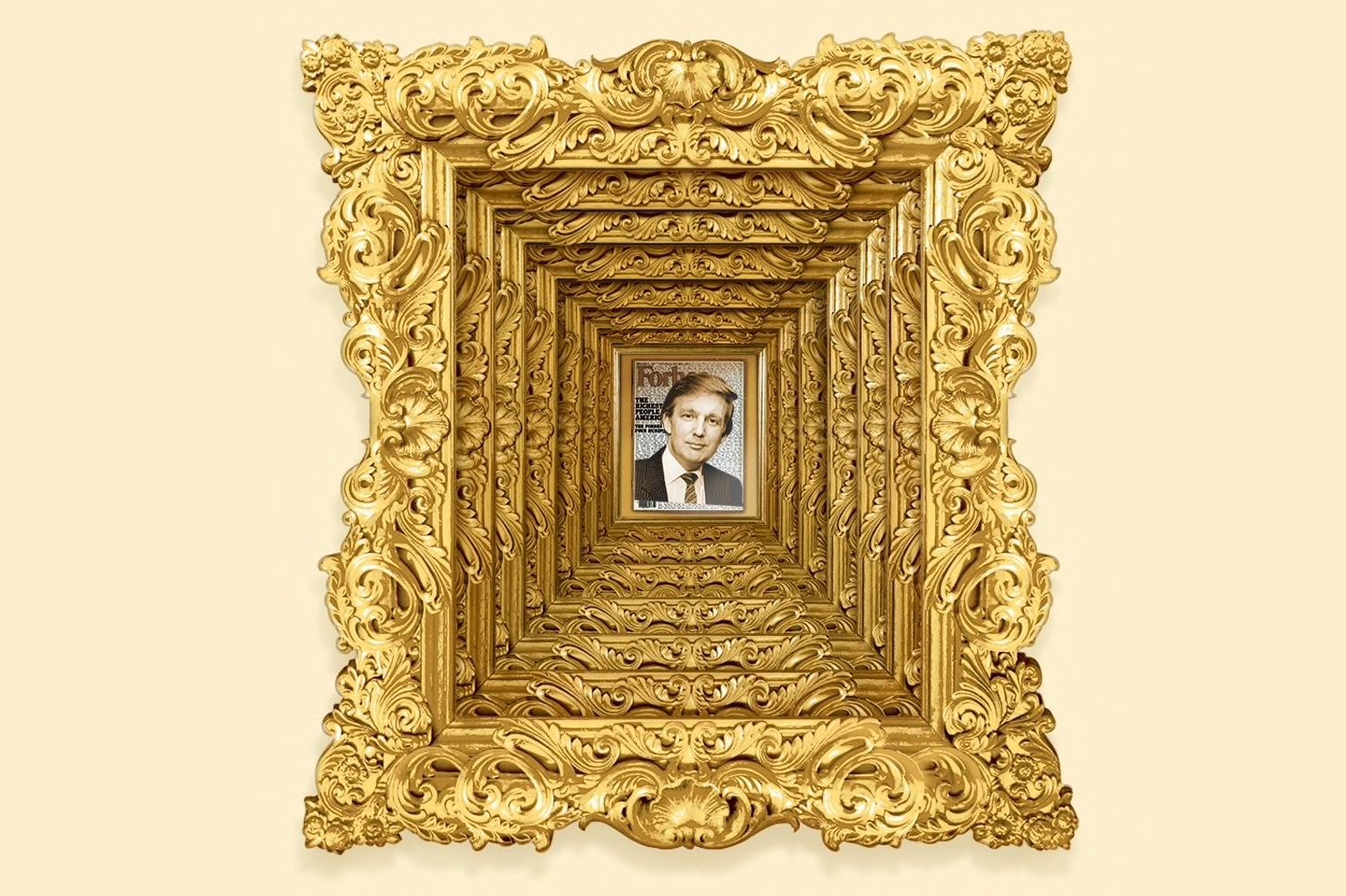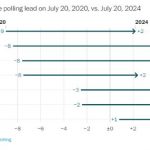But that figure seemed high. I estimated the apartments to be worth about $9,000 each: They could not easily be converted to lucrative co-ops, and Trump had falsely described the location of the Queens buildings. He’d claimed they were in Forest Hills when, in fact, they were in the far less valuable Jamaica Estates neighborhood a few miles away. Since Donald’s new projects were still in development or unproven, the outer-borough apartments formed the basis of a Trump family net worth estimate of $200 million.
Six weeks after my initial interview, I received a call at my desk from Trump’s secretary and gatekeeper, Norma Foerderer. She said she wanted my work address so Trump could send me an invitation to a company party. Then she abruptly added: “Oh, Donald was just passing by! He said that he wanted to have a few words with you.”
I switched on my audio recorder — my normal practice — as Trump expressed his concern for what he called “your little article.” He invited me for a follow-up interview with him because, he said, he was richer than the rest. “I don’t think that you have your facts 100 percent correct” about his standing vis-a-vis other New York developers. I was contemplating a too-low appraisal of his net worth, he said: “You had us down in a certain category, and then you mentioned other names, and there’s no contest, you know. I mean, there’s no contest. So I just wanted to mention that.”
Trump knew I had doubts about his assertions, so he had his lawyer, Roy Cohn, call me. Cohn spent most of his time threatening lawsuits, schmoozing with mobster clients and badgering reporters with off-the-record utterances that made his clients look good and their enemies look bad. Cohn surprised me at my Forbes desk that summer: “Jon Greenberg,” a scrappy voice bellowed, before I could connect my tape recorder. I took notes by hand. “This is Roy. Roy Cohn! You can’t quote me! But Donny tells me you’re putting together this list of rich people. He says you’ve got him down for just $200 million! That’s way too low, way too low! Listen, I’m Donny’s personal lawyer, but he said I could talk to you about this. I am sitting here looking at his current bank statement. It shows he’s got more than $500 million in liquid assets, just cash. That’s just Donald, nothing to do with Fred, and it’s just cash.” He concluded: “He’s worth more than any of those other guys in this town!”
I offered to have a messenger pick up the bank statement at his office. Cohn protested that the document was confidential. “Just trust me,” he said. I told him I wouldn’t take his word without seeing the paperwork. “It’s confidential!” Cohn yelled.
My Forbes editors and I spent many hours deliberating about where to place Trump. Based on what little we knew — his claims; a 1976 New York Times profile that said the Trump Organization owned 22,000 apartments; and Fred’s reputation for housing a generation of working-class New Yorkers in Brooklyn and Queens — we ranked Donald and Fred in the bottom tier among major real-estate developers, each with half of a $200 million apartment empire.
Even though I learned later that this was far more money than Donald possessed, it did not satisfy him for the following year’s edition. During his 1983 interview, Trump claimed that there were actually 25,000 apartments and that his net worth had ballooned because of the success of his new projects, Trump Tower and the Grand Hyatt Hotel on East 42nd Street, as well as a pending casino deal in Atlantic City.
Then Cohn called again, this time to say Trump was worth more than $700 million. I recorded our chat. He opened with an outrageous claim that Trump had personally received $250 million from the recent sale of a 50 percent interest in his new project to build a Harrah’s casino in Atlantic City. “A certain amount was cleared, say, around a hundred million,” Cohn said. “. . . But the balance was used by him to liquidate certain other things, which made his overall position very impregnable. Trump Tower has been going like a house afire, and the profits on that are much higher than had been anticipated, and the same is true with Grand Hyatt. On top of which he’s been in a series of private transactions, and he files with banks for between $700 to $750 million, as well as with Equitable” — Equitable Life Assurance, the company that financed Trump Tower — “which backs him in all of his deals.”
Again, Cohn refused to show me a statement, but armed with misinformation about Trump’s casino payout and claims about cash flow at other properties, I inflated his (and his father’s) net worth to $200 million each. In retrospect, Fred Trump was probably worth half that amount, and Donald, once again, should not have been on the list at all.
The next year I received two calls from “John Barron,” the fictitious Trump executive who told me that Donald had taken “in excess of 90 percent” ownership from Fred. He also suggested that Trump was on track to earn a $50 million profit every year from his first Atlantic City casino. And so, in 1984, we increased Donald’s net worth estimate to $400 million and left Fred in, for his last year on the Forbes 400, at $200 million. (Barron also bad-mouthed the competition, saying that developer George Klein had struck a “bad deal” to redevelop Times Square — a bid Trump had lost — and was “going to go down the tubes.”)
Although Trump, posing as Barron, asked Forbes to conduct the conversation off the record, I am publishing it here. I believe an intent to deceive — both with the made-up persona and the content of the call — released me from my good-faith pledge. In a 1990 court case, Trump testified that he had used false names in phone calls to reporters. In 2016, when The Washington Post published a similar recording, Trump denied it was him.
Fred Trump turned down my attempts to interview him for the Forbes 400. He allowed Donald to say whatever he wanted about the family’s business. In the only major interview he gave after Donald seized the limelight, Fred told the New York Times in 1983 that “Donald has a competitive spirit and I don’t want to compete with him. . . . He amazes me. He’s gone way beyond me, absolutely.”
Eventually, nearly every one of Trump’s pronouncements about his wealth unraveled.
The number of apartments was the first problem. The commonly cited figure — that his family owned 25,000 units — began with the mention of 22,000 apartments in that fawning 1976 New York Times profile. In 1988, after I left Forbes, I counted the units and found fewer than 8,000. (I was working briefly on a documentary about Trump that was never completed.) Another Forbes reporter that year, John Anderson, found the same thing. He called the Trump residential management organization, he told me then, and asked an executive named Harry Green how many apartments the company owned. “About 10,000,” Green told him, meaning that our 1982 family valuation of $200 million should have been just $90 million (below the cutoff at that time for inclusion on the list). A few minutes later, Green called Anderson back and corrected himself: Now there were 25,000 again.
Another brazen claim was that Trump, not his father, owned the company’s outer-borough apartments, which his father built beginning in the 1930s. Based on what Trump said during our 1982 and 1983 interviews, I’d assumed that Donald and Fred each owned half, resisting the son’s insistence that he had purchased 80 percent of the units or consolidated the holdings himself. Still, this comment went into the Forbes 400 records, and in 1985, after I left the project, Trump was estimated to be worth $600 million, and his father was off the list.
It would be decades before I learned that Forbes had been conned: In the early 1980s, Trump had zero equity in his father’s company. According to Fred’s will (portions of which appeared in a lawsuit), the father retainedlegal ownership of his residential empire until his death in 1999, at which point he left it to be divided between his four surviving children and some of his grandchildren. That explains why, after Trump’s companies went bankrupt in the early 1990s, he borrowed $30 million from his siblings, secured by an estimated $35 million share of his future inheritance, according to three sources in Tim O’Brien’s 2005 biography, “TrumpNation.” He could have used his own assets as collateral if he’d had any worth that amount, but he didn’t.
The most revelatory document describing Trump’s true net worth in the early ’80s was a 1981 report from the New Jersey Casino Control Commission. O’Brien obtained a copy for his book. Trump had applied for an Atlantic City casino license, and regulators were able to review his tax returns and personal and corporate debt, giving them the most accurate picture of his finances. They found that he had an income of about $100,000 a year, while his 1979 tax returns showed a $3.4 million taxable loss. Trump’s personal assets consisted of a $1 million trust fund that Fred Trump provided to each of his children and grandchildren, a few checking accounts with about $400,000 in them and a 1977 Mercedes 450SL. Nowhere did the report list an ownership stake in the Trump Organization’s residential apartments. Trump also possessed a few parcels of valuable but highly leveraged real estate, financed with $22.5 million in debt, all of it secured by his father’s assets. He did not own a safe deposit box or stocks in publicly traded companies. In sum, Trump was worth less than $5 million, not the $100 million that I reported in the first Forbes 400.
During our first interview in 1982, Trump informed me that he had bought the Barbizon Plaza Hotel and the adjoining 100 Central Park South for just $13 million, a steal. While I was in Trump’s office, a broker supposedly called to offer him $100 million for the property. Trump refused the offer while looking me in the eye; he pointed out that his net worth should include an equity boost of $87 million profit. I believed then that he used a staffer to stage the call, and I resisted the fictitious valuation. But the $13 million price tag for a valuable parcel was recorded in Forbes 400 files, and it soon showed up in other publications, such as New York magazine . It remains on Wikipedia today. Yet tucked away on Page 63 of the Casino Commission report was a section describing Trump’s purchase of the property for $65 million, facilitated by a $50 million loan to Trump by Chase Manhattan Bank. As with many of his buildings, Trump’s debt was far higher, and his true equity far lower, than he claimed.
Roy Cohn had told me that Trump received $250 million from Holiday Inn for its half-interest in the Atlantic City casino. But according to O’Brien, Trump’s actual income from the deal was a construction and management fee (not profit) of about $24 million, while Holiday Inn financed the construction of the $220 million casino.
Later attempts by Trump to paint himself as fantastically wealthy were also duplicitous. In 1989, Trump sent Forbes journalist Harry Seneker a statement of his $3.7 billion net worth. I have obtained the letter. It indicated $900 million in liquid assets. “I am more liquid than any major developer in the United States,” Trump wrote, inducing the magazine to increase Trump’s listing from $1 billion in 1988 to $1.7 billion in 1989.
But according to the New Jersey Casino Commission, which issued another report in 1991, by the end of 1990, Trump’s entire cash position — in both his business and personal accounts — was just $19 million. The amount was insufficient to pay the debt on his over-leveraged casino and real estate holdings while still covering his personal expenses of $1 million per month. His net worth, the commission estimated, was $205 million — less than 6 percent of what he’d told Forbes. In 1990, the magazine dropped Trump from the list and kept him off it for five years.
Forbes declined to comment for this article, but its top editor, Randall Lane, interviewed then-candidate Trump for the Forbes 400 in 2015 and wrote about the magazine’s long struggle to accurately assess his net worth in an article titled “Inside The Epic Fantasy That’s Driven Donald Trump For 33 Years .” Of the 1,538 tycoons who had been on the “Rich List” through the years, Lane wrote, “not one has been more fixated with his or her net worth estimate on a year-in, year-out basis than Donald J. Trump.”
I was a leading New York real estate reporter through the 1980s. I left the Forbes staff in 1983 but continued to freelance for the magazine while writing major investigative features as a contributing editor for the new Manhattan, Inc. magazine, as well as New York, Avenue and New York City Business. I knew all the key players. I thought I had a handle on this material.
But Trump was so competent in conning me that, until 35 years later, I did not know I’d been conned. Instead, I have gone through my career in national media with a misinformed sense of satisfaction that, as a perceptive young journalist, I called Trump on his lies and gave Forbes readers who used the Rich List as a barometer of private wealth a more accurate picture of his finances than the one he was selling.
The joke was on me — and everyone else. Trump’s fabrications provided the basis for a vastly inflated wealth assessment for the Forbes 400 that would give him cachet for decades as a triumphant businessman.
In truth, almost nobody had a clear picture of Trump’s books. In 1990, Trump brought in Steve Bollenbach as a new chief financial officer to respond to lender concerns about his crippling debt. “When Bollenbach began delving into the organization’s finances, he got a surprise,” The Washington Post’s Michael Kranish and Marc Fisher write in “Trump Revealed,” their comprehensive 2016 biography. “The small staff on the twenty-sixth floor of Trump Tower included three accountants. Each knew about pieces of the fraying empire — the casinos, for instance, or the condos. But no one knew the overall picture; there were no consolidated financial reports.”
In the absence of a functioning balance sheet, the list didn’t just make Trump feel like a winner, according to O’Brien; it may have provided some of the documentation he needed to borrow reckless sums of money — vast loans that he used, for years, to actually make him a winner. “The more often Forbes mentioned him, the more credible Donald’s claim to vast wealth became,” O’Brien said, arguing that Trump and the list were “mutually reinforcing”: “The more credible his claim to vast wealth became, the easier it was for him to get on the Forbes 400 — which became the standard that other media, and apparently some of the country’s biggest banks, used when judging Donald’s riches.”
Trump returned to the Rich List in 1996 with a reported net worth of $450 million and an editor’s note that he claimed to be worth $2 billion. He never fell off it again. In his book, O’Brien criticized Forbes for rewarding Trump’s fabrications, citing interviews with “three people with direct knowledge of Donald’s finances” who estimated his true net worth after debts to be “somewhere between $150 million and $250 million.” Trump, who had told O’Brien he was worth $6 billion, sued for libel — and lost. When he lost his appeal in 2011, a New Jersey appellate judge summarized O’Brien’s point this way: “The largest portion of Mr. Trump’s fortune, according to three people who had had direct knowledge of his holdings, apparently comes from his lucrative inheritance. These people estimated that Mr. Trump’s wealth, presuming that it is not encumbered by heavy debt, may amount to about $200 million to $300 million. That is an enviably large sum of money by most people’s standards but far short of the billionaires club.”
The opacity persists. In 2016, Trump’s presidential campaign put out a statement saying the candidate had a net worth “in excess of TEN BILLION DOLLARS.” But he has never released his tax returns, and he has said that the core Trump Organization asset is the ownership of his brand — an ineffable marketing claim that is impossible to substantiate or refute.
[CORRECTION: An earlier version of this story said that, as a real estate developer, Trump had bought 110 Central Park West. The address was actually 100 Central Park South. The article also included a quote that made it appear that a New Jersey appellate judge was agreeing in 2011 with author Timothy O’Brien about Trump’s net worth. In fact, the judge’s quote was merely recounting O’Brien’s assertions without endorsing them.]






Comments (1)
-

r. eyvind wahlgren April 25, 2018
I enjoyed your recent article "A Wealth of Lies" in the Sunday April 22, 2018 edition of the Washington Post. An observation in looking at the excerpt from the 1982 Forbes 400 report immediately following the Fred and Donal d Trump entry, I noticed a name, "William Barron Hilton". Would that be where "John Barron" aka Donald Trump adopted his alias?